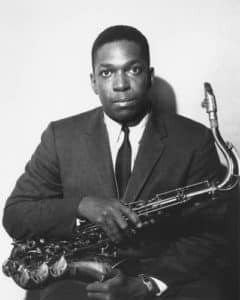A Century of Gospel Music
Gospel music is the form of African American religious music. It is a willful expression of the desire of African Americans to embrace and celebrate the beliefs and values that affirm their culture and religion. Gospel music arose during the 1920s, which was during the Great Migration when three million Blacks migrated from the rural South to the North. At this point in time, Gospel music gained widespread usage among Blacks across the country. Throughout the twentieth-century, gospel music has adopted several different styles. For example, there was a transitional gospel period and contemporary gospel period.
Transitional Gospel Music
According to the book called African American Music: Second Edition by Mellonee V. Burning and Portia K. Maultsby, transitional gospel music is “forms of African-American religious music that represent the bridge between the spiritual and its 20th century counterpart of traditional gospel music.” The transitional gospel period arose during the 1920s/1930s.
A popular artist during this time was Thomas A. Dorsey, the father of gospel music. Dorsey migrated from Georgia to Chicago. He was the son of a Baptist preacher, and he grew up playing organ in the church. After visiting the national Baptist convention held in Chicago in 1921, his level of religious engagement took off from then!
Transitional Gospel Music: Holiness-Pentecostal
Holiness-Pentecostal is a form of transitional gospel music. It arose during the late 1920s and early 1930s. This style of music is described by its style of aesthetic features. Moreover, the repertoire included Protestant hymns and occasionally a new genre of spirituals also known as “gospel hymns” or “jazz hymns.” During the holiness and Pentecostal denominations, musical expression in the African American church grew.
For example, in 1897, Charles H. Mason founded the Church of God in Christ (COGIC) in Arkansas. However, during his study in Azuza in Los Angeles led by William Seymour, the man recognized in the Black community as the founder of Pentecostalism, Mason testified what he gained there. He noted that the spirit had taken control of him, and it taught me how and what to sing, which were all new songs. Following, Black churches in the U.S. reflected a strong COGIC impression.
A popular artist during this time period was Arizona Dranes. She was an evangelist and a musician of COGIC. Moreover, she was a blind-singer pianist who was also a part of the migration. She sings with unbridled fervor and spiritual conviction, which is showcased through her voice. Two of her most famous songs include “I’ll Go Where You Want Me To Go” and “Bye and Bye We’re Going to See the King”.
Transitional Gospel Music: Tindley Style
The Tindley style of transitional gospel music was created by Rev. C.A. Tindley. He is known for his dynamic preaching and significant membership of his church, which was about 10,000 during the 1920s. For him, music was an essential component of dynamic worship. Furthermore, he was known to incorporate songs with his sermons. Moreover, he was influenced by the doctrines of the Methodist-led holiness movement. His music displays a spirit of triumph over adversity. In addition, he incorporated call and response structures into his music.
Transitional Gospel Music: Rural
Rural is a form of transitional gospel music. It arose during the 1920s and 1930s. In contrast to the other forms of transitional music, the rural religious style of music is virtually identical to that of rule blues tradition. Moreover, it is often sung by solo blue singers with the use of guitars or harmonicas. There were minimal chord changes and variable rhythmic structures. However, call-response was incorporated in the music.
Popular artists that fall under this category are Blind Willie Johnson and the Soul Stirrers. Below, there are songs from each artist.
Contemporary Gospel Music
Contemporary gospel music arose during the 1970s. It embraces elements of R&B, rock, funk, jazz, and other popular styles. Moreover, it is usually performed by a small ensemble. The release of the recording “Oh Happy Day” in 1969 by the Edwin Hawkins Singers in the contemporary gospel era because of their use of the fender bass, bangos, and horns in the music though it is now considered a traditional gospel song.
Some popular artists during this period include Kirk Franklin, Shirley Caesar, Marvin Sapp, and Take 6. Below, there are songs from each artist.
Conclusion
While the peculiarity of various types of gospel music mirrors the aggregate transformation of African-Americans to a steadily changing social environment, the ideas that exist among these structures are similar in their characteristics of the social qualities that have continued overtime.
In contrast, new gospel music structures are being added continually to the arrangements collection, and reevaluations of spirituals, hymns, and different structures. In general, gospel music has just been restored and renewed by being combined with a more contemporary sound.
More by the Author

The Two Waves of Detroit Techno Music: Techno and Rave!
The Two Waves of Detroit Techno Music: Techno and Rave! Techno, house, and rave (electro) are the primary forms of electronic music in Detroit. Though
Women of the Blues: Bessie Smith
Women of the Blues: Bessie Smith The Blues genre did not only include black men. Black Women significantly contributed to the sound of the blues.
A Century of Gospel Music
A Century of Gospel Music Gospel music is the form of African American religious music. It is a willful expression of the desire of African
Ciara
CIARA Who is Ciara? Ciara Princess Wilson (aka Ciara) was born on October 25, 1985 in Fort Hood, TX. Ciara does it all. She is

A Musical Narration: “Psalm” from “A Love Supreme”
A Musical Narration: “Psalm” from “A Love Supreme” John Coltrane turned his handwritten poem “Psalm” into the final song on his “A Love Supreme” album.

